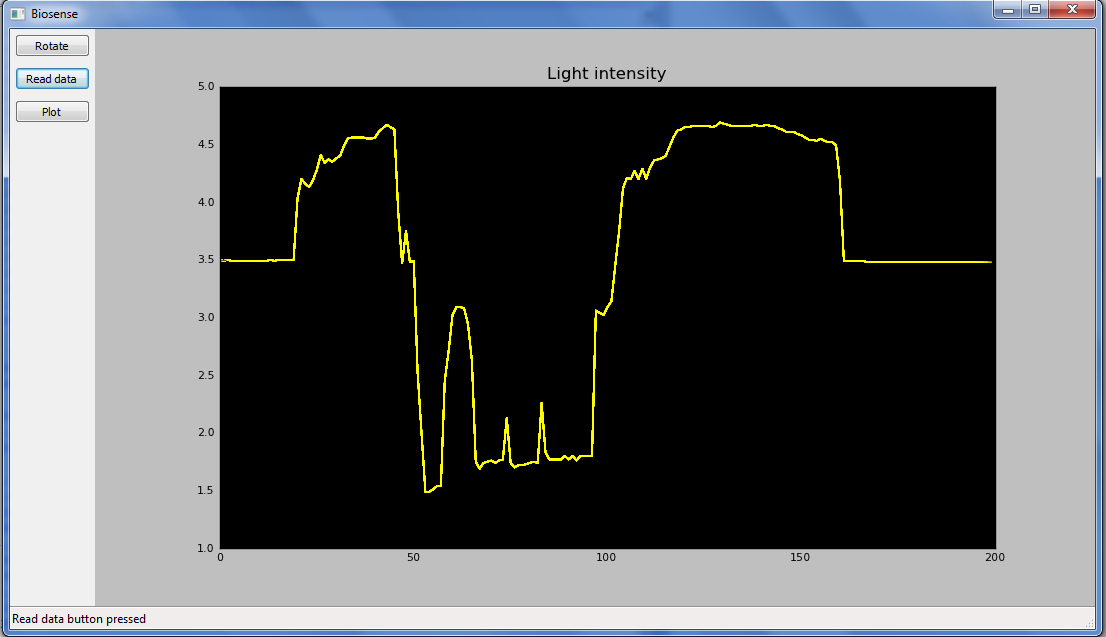Team:Cambridge/Week 3
From 2012.igem.org
(→Wednesday) |
(→Monday) |
||
| Line 20: | Line 20: | ||
Paul and Andreas went over to the photonics department to begin the process of making our circuit for the analysis of the bacterial luciferase signal. They also began formalizing the design of the actual instrumentation so it could be made over the next few days. | Paul and Andreas went over to the photonics department to begin the process of making our circuit for the analysis of the bacterial luciferase signal. They also began formalizing the design of the actual instrumentation so it could be made over the next few days. | ||
| - | Jolyon managed to find an endogenous fluoride riboswitch that had been reported in bacillus subtilis. As a novel biobrick, this would have obvious applications in the analysis of | + | Jolyon managed to find an endogenous fluoride riboswitch that had been reported in bacillus subtilis. As a novel biobrick, this would have obvious applications in the analysis of water purity. Such a device could also be pitched at persons a la General Ripper, concerned about fluride contaminating their "precious bodily fluids", though such a marketing strategy could produce somewhat sporadic orders. |
Some of us also started using the faintly egomaniacal geneious program for the analysis of DNA. | Some of us also started using the faintly egomaniacal geneious program for the analysis of DNA. | ||
Revision as of 11:32, 12 July 2012
| Home | Team | Official Team Profile | Project | Parts Submitted to the Registry | Modeling | Notebook | Safety | Attributions | Sponsors |
|---|
Contents |
Monday
We aimed to start doing something towards our project today. To this end, Tom and Oli began making up a batch of competent bacillus (strain 168) for freezing and future use. The protocol for this can be found here (another protocol that needs writing up - Oli).
Paul and Andreas went over to the photonics department to begin the process of making our circuit for the analysis of the bacterial luciferase signal. They also began formalizing the design of the actual instrumentation so it could be made over the next few days.
Jolyon managed to find an endogenous fluoride riboswitch that had been reported in bacillus subtilis. As a novel biobrick, this would have obvious applications in the analysis of water purity. Such a device could also be pitched at persons a la General Ripper, concerned about fluride contaminating their "precious bodily fluids", though such a marketing strategy could produce somewhat sporadic orders.
Some of us also started using the faintly egomaniacal geneious program for the analysis of DNA.
All in all, a fairly productive first day!
Tuesday
Oli and Tom continued with the rather elongated protocol for creating competent bacillus.
Jolyon contacted the team in Yale who had discovered the bacillus based riboswitch for the detection of fluoride. Hopefullly we should be able to integrate it into some sort of reasonably fast acting novel bacterial biosensor which we can then hook up to our standardized bioluminescence. In order to bring about this standardization, Andreas introduced the biologists to some of the principles of control theory, so we had some of the conceptual tools to change the shapes of the input/output curves. One important possibility is using these control theory principles to reduce the noise of the response.
Andreas and Paul also started on the software for our device today. Our current plan is to use an Arduino board to detect our inputs, write this to a python file and then read this via C to make a user interface. Very snazzy.
In addition to this, Emmy got the completed home page online! Considerable! A graphic designer as well as a biologist in our midst...
Wednesday
The first results of our light sensor made by Tom and Paul came out today: Real-Time image captured by our freshly made primitive software, monitoring a light sensor on an arduino board
We also built up a schedule for when each of our individual modules should be finished by. Our final schedule can be seen on the calender (Can we get our Google calender on this wiki?. Hopefully we shouldn't look too unprepared when UEA visit tomorrow. By the way, UEA are visiting tomorrow.
Continued wrangling for the already constructed plasmids also took place, with Tom trying to get his hands on an optimized lux operon for use in bacillus. Whether or not it is actually codon optimized is, at this time, unknown. If the worst comes to the worst however, we can just get DNA 2.0 to synthesize the whole thing and optimize it for bacillus. We may have finally found a use for our synthesis budget.
Lastly, we finally manage to make up and freeze our stocks of bacillus. At eight fifteen, Tom and Oli finally exited the building after a ten hour protocol (Link to the specific protocol here if possible). At least we won't have to do it again for a while.
Just how competent our attempts at competency were will be tested tomorrow.
 "
"
